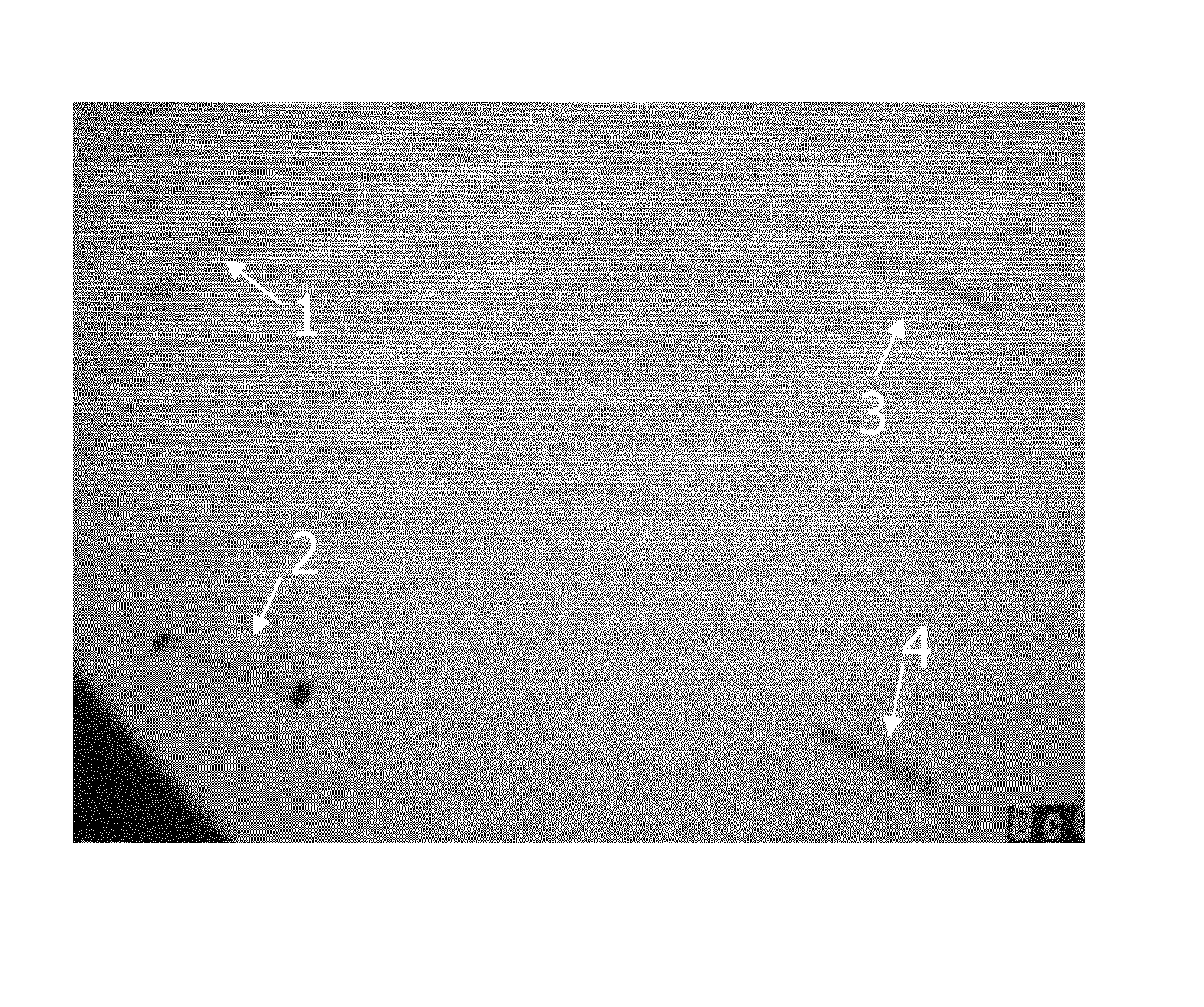Implant having a core and a tube encasing the core
a technology of implants and tubes, applied in the field of implants, can solve the problems of loss of quality of life, immune system activation, infertility in affected women, prior art implants do not sufficiently control drug release,
- Summary
- Abstract
- Description
- Claims
- Application Information
AI Technical Summary
Benefits of technology
Problems solved by technology
Method used
Image
Examples
example 1
Production of Polydimethylsiloxane Implants
[0113]Typically, 19.4 g of polydimethylsiloxane (PDMS, base, medical grade) was placed in a sterile container and kept at −20° C. for 1 hour. Thereafter, 0.5 g of tetrapropyl orthosilicate (SiOPr4, cross-linker, medical grade) and 0.1 g of tin octoate (SnOct2, catalyst, medical grade) were mixed together in a separate glass container. This mixture of catalyst and cross-linker was then added to the cold PDMS under a laminar flow hood. The PDMS blend was manually mixed for 2 minutes before being placed under a vacuum for 5 minutes in order to remove trapped air bubbles. The PDMS mixture was finally transferred to a plastic syringe and maintained at −20° C.
[0114]PDMS implants were prepared by cross-linking the PDMS mixture in a mold at 80° C. This mold, composed of an iron core covered with Teflon film, allows preparation of 12 implants of 20 mm in length and 3 mm in diameter in a row. The PDMS mixture contained in the syringe was injected int...
example 2
Production of Ethylene Vinyl Acetate Implants
[0115]Ethylene vinyl acetate (EVA) implants were prepared by extrusion of EVA pellets (Elvax 3129, Dupont) in a micro-extruder (DSM 5 cm3 micro-extruder equipped with a twin-screw). For this purpose, EVA pellets were immersed in ethanol in order to extract butyl hydroxytoluene (BHT). After filtration, they were dried under a vacuum at room temperature. Thereafter, 8 g of EVA was introduced into the twin-screw micro-extruder at 80° C. at a rotation rate of 100 rpm. After 5 minutes of mixing, the resulting EVA rods were collected and directly placed into sterile water, primarily to fix their geometry, but also to avoid adsorption of dirt onto the surface. The rods were then cut into 2 cm implants and stored in a sterile bag.
example 3
Production of Poly(Hydroxyethyl Methacrylate) Implants
[0116]Typically, 5 ml of freshly distilled hydroxyethyl methacrylate (HEMA) containing 0.1% in weight of ethylene glycol dimethacrylate (EGDMA) was transferred to a glass tube. After degassing the solution by nitrogen bubbling for 5 minutes, 1.67 ml of ammonium persulfate (APS) aqueous solution (APS concentration=0.024 mol / l) and 7 μl of tetramethylethylenediamine (TEMED) were added. After short homogenization, the solution was transferred to an insulin syringe used as a sterile and disposable mold. The syringes were placed under a laminar flow hood at room temperature for 12 hours to allow polymerization. The implants were then collected by applying simple pressure to the syringe piston. The ends of the implants were cut to obtain implants of 2 cm long (diameter 3 mm). The poly(HEMA) implants were then washed by repeated immersion in sterile water to remove unreacted HEMA. After washing 5 times, the implants were placed in a ste...
PUM
| Property | Measurement | Unit |
|---|---|---|
| time | aaaaa | aaaaa |
| of time | aaaaa | aaaaa |
| melt index | aaaaa | aaaaa |
Abstract
Description
Claims
Application Information
 Login to View More
Login to View More - R&D
- Intellectual Property
- Life Sciences
- Materials
- Tech Scout
- Unparalleled Data Quality
- Higher Quality Content
- 60% Fewer Hallucinations
Browse by: Latest US Patents, China's latest patents, Technical Efficacy Thesaurus, Application Domain, Technology Topic, Popular Technical Reports.
© 2025 PatSnap. All rights reserved.Legal|Privacy policy|Modern Slavery Act Transparency Statement|Sitemap|About US| Contact US: help@patsnap.com



